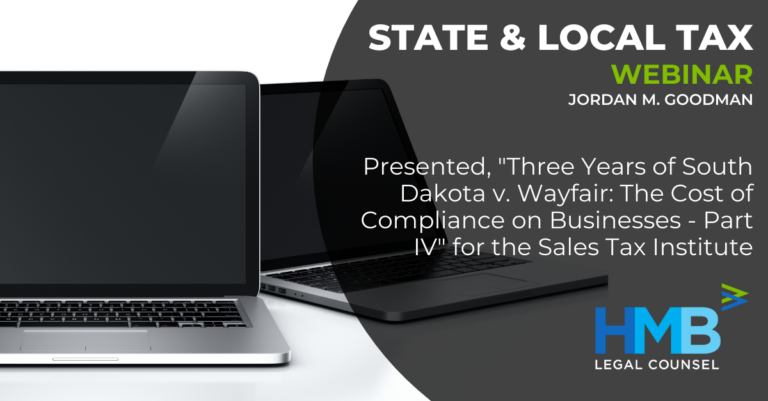In Part IV of the Three Years of South Dakota v. Wayfair series by Sales Tax Institute, Jordan M. Goodman, with Diane Yetter for Sales Tax Institute takes a look at local tax issues following the Wayfair decision. Tune in to learn why local taxes have become such a huge headache, what could be improved and how states are trying to simplify compliance.
Thirty-eight states permit local jurisdictions to impose taxes. The authority of local jurisdictions to impose taxes varies state to state as well as the purpose of the taxes imposed. You may see local taxes for counties, cities, school districts, tribal lands, special purpose districts and beyond.
Local tax laws and procedures often do not mirror state sales and use tax laws and procedures. Many local jurisdictions have different exemptions, tax bases, and required forms than those of the state. These differences increase the complexity of compliance for businesses.
Managing local tax requirements hasn’t gotten any easier post-Wayfair and has spurred a lot of confusion for taxpayers. Many companies have had to take a fresh look at their local tax obligations as certain local jurisdictions believe they have the authority to impose their own economic nexus standard.
Recent survey results from the Sales Tax Institute audience about their post-Wayfair experiences brought to light just how challenging local taxes can be in the new sales tax environment. To dive deeper into these challenges and learn how states are addressing local tax complexities, Jordan M. Goodman and Diane Yetter, President and Founder of the Sales Tax Institute presented.
Read Part IV in its entirety here.
View all parts of the series below.
Part I of the series covers the major challenges businesses have faced post-Wayfair and what's next for nexus.
Part II looks at the cost of compliance on businesses following the decision with an emphasis on how it has impacted technology needs and staffing.
Part III dives into marketplace nexus and the impact on marketplace facilitators and sellers' registration and collection requirements.



